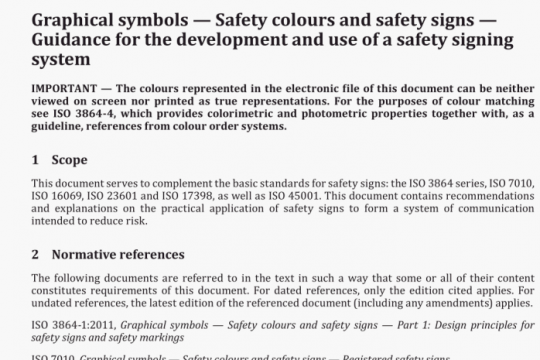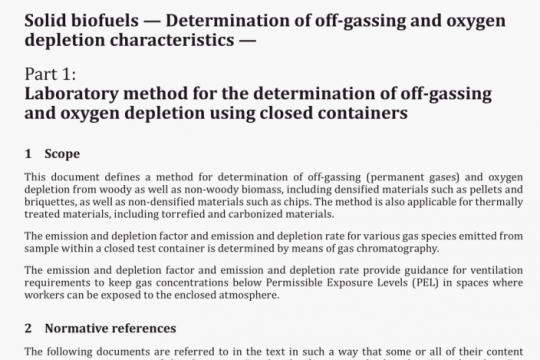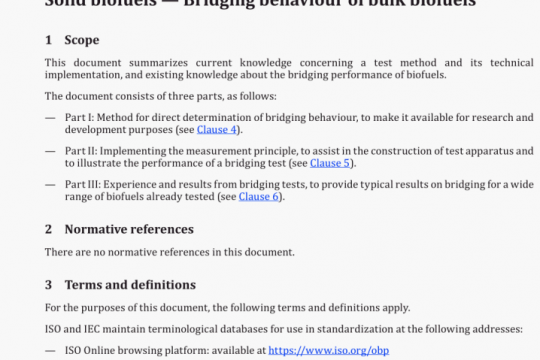ISO 20468-6 pdf free download
ISO 20468-6-2021 pdf free download.Guidelines for performance evaluation of treatment technologies for water reuse systems一 Part 6: Ion exchange and electrodialysis.
4 Outline of ion exchange and electrodialysis
4.1 General
IER and IEM use ionic functional groups fixed in polymer beads or in polymer sheets. These fixed ionic functional groups exchange ions of an opposite charge or selectively transport ions of an opposite charge. These technologies can be used for many applications including purifying wastewater by passing it through an IER packed tower, or desalinating and concentrating wastewater with an electrodialyser in which IEM are equipped. Among these applications, ion exchange in IER and ED in IEM also apply to water reclamation. Annex A shows the main process and typical applications of IER and IEM.lon exchange and ED are one of several technologies (Annex B) that are used for desalination. Table 1 shows typical salinity range of salt removal about IE and ED.
ED, RO, IE and distillation are widely known as a desalination technology. But each strong point is different. In case of ED, its feature is that both ion concentration and desalination are possible. For example, in the concentration of seawater, it is possible to concentrate salinity up to about 240g/l and on the contrary in the desalination, it can be expected to be desalinated about O,2g/l. It also can arrange the desalination level. For the desalination purpose, ED is often applicable for brackish water and ground water.
IE is a purification technology for removing target ions. The purification process Is performed by an adsorption and desorption mechanism. IE is applicable to raw water under lg/l..TDS and can produce deionized water and/or ultrapure water. IER is also applicable for decolorizing raw water.
To select an appropriate technology, it is highly recommended to consider the pros and cons of those technologies. In some cases, a combination of those technologies may contribute great benefits to users and stakeholders.
EDI is applied to produce pure water or ultrapure water instead of a resin tower or RO. EDt stacks have an IER or fibre in desalinated chambers to decrease resistivity. As a result, EDt can provide very low conductivity water.
4.2 Principle of Ion exchange11111’91
Typical functional groups of IERs are sulfonic acids and quaternary ammoniums, and such IERs are classified by their functions into CERs, which can exchange cations, and AERs, which can exchange anions. IERs have spherical crosslinked polymer matrix with functional groups, counter ions, and hydrated water. These polymer structures affect the ion exchange capacity, reaction rate, and physical properties of lERs. Annex C shows a structural model of IER,
Ion exchange using lERs depends on a mechanism by which mobile ions from an external solution are exchanged in the opposite direction for an equivalent number of ions that are electrostatically bound to functional groups contained within a solid polymer matrix of lERs. Annex D shows the selectivity and selectivity coefficient of lERs.
The purification process using IER is most commonly performed in cyclic operations of the column method with an adsorption and desorption mechanism. Each cycle is divided into sorption and regeneration. Figure 1 shows an outline of an IER tower. Figure 2 shows a representation of an ion exchange operation cycle.ISO 20468-6 pdf download.




